Garland Pose Yoga, or “Malasana” in Sanskrit, is a squat-based pose that is popular in many types of yoga. To make the stretch stronger, you should do a deep squat with your feet hip-width apart and your hands in prayer position. This pose is very important for opening up the hips, stretching the lower back, legs, and groyne, and getting better at balance and focus.
Discover how Garland Pose Yoga can change your life. It's a simple practice that can help you become more flexible, reduce stress, and improve your general health. With this important yoga pose, you can find the keys to a healthier, more peaceful life. Let's Explore
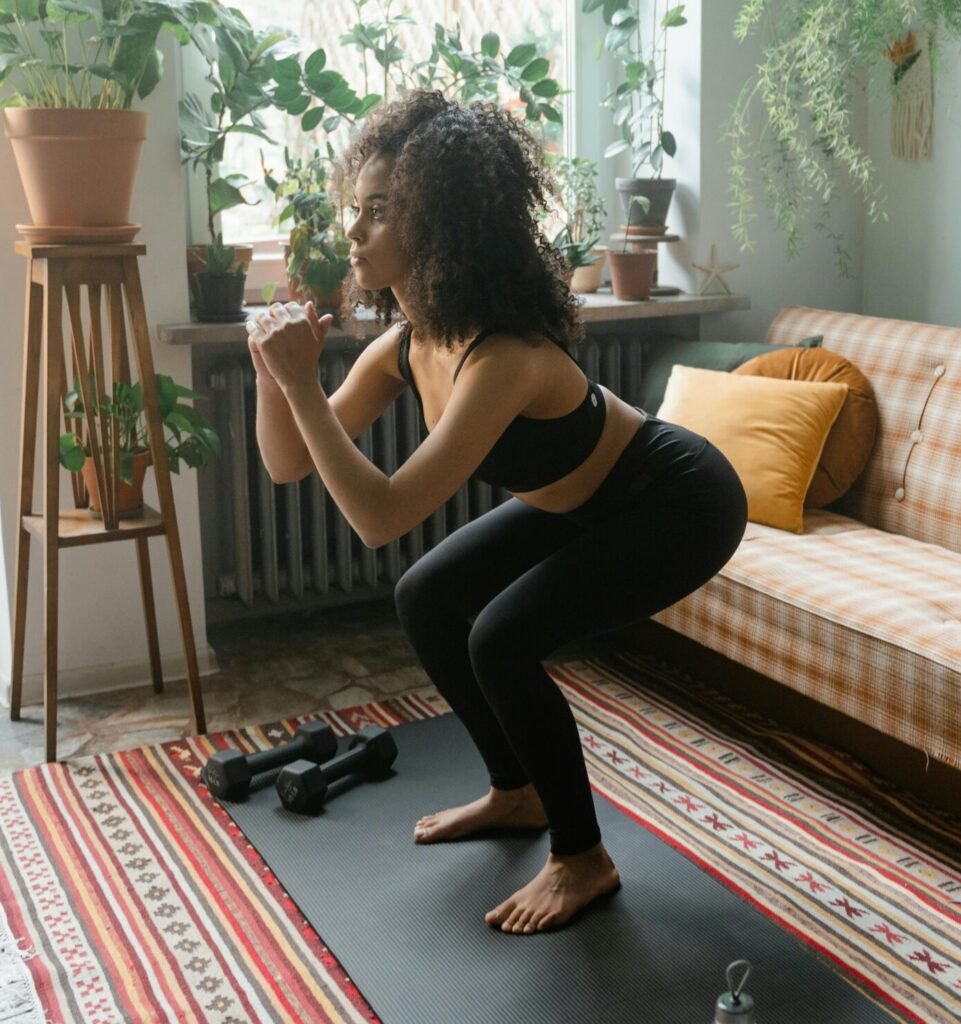
Malasana (Garland Pose or Squat)
Did you find it easy to sit in a low pose when you were a kid? A lot of kids do, and they might do it for hours on end while they play on the floor. This skill can be lost as an adult because most of us spend our days sitting in chairs and don’t spend much time on the ground. Most of the time, you haven’t done this pose in a long time if you can’t do it now. Do it as often as you can if you can. If it isn’t, getting into this pose is a good goal.
People have been sitting in this deep squat pose for a very long time. People in Asia still meet and eat while in this pose. They also use squatty toilets all the time! We prefer toilets, so these aren’t popular in the West, but I think the idea of squatty potties is great. Take care of your body while you’re out there! Philip Beach is an expert who says that Garland Pose is our heritage. He thinks we all deserve to do this pose, which makes the ankles stronger and more flexible and forces the hips to bend deeply. In simple terms, it keeps us moving all our lives.
Physical Benefits
Improves Hip Flexibility:
- Enhanced Range of Motion: Regular practice of Garland Pose helps to open the hips, increasing flexibility and making everyday movements easier.
- Reduced Hip Tightness: This pose alleviates tightness in the hip flexors, which is common due to prolonged sitting.
Strengthens Ankles and Calves:
- Better Stability: By engaging the muscles in the lower legs, Garland Pose improves balance and stability.
- Injury Prevention: Strengthening these muscles helps prevent common injuries such as sprains.
Alleviates Lower Back Pain:
- Gentle Stretching: The deep squat position gently stretches the lower back, relieving tension and discomfort.
- Posture Improvement: Regular practice encourages better posture, reducing strain on the lower back.
Enhances Digestive Health:
- Internal Organ Massage: The squatting position massages the abdominal organs, promoting better digestion and alleviating issues like constipation.
- Improved Circulation: Increased blood flow to the digestive organs supports overall digestive health.
Mental and Emotional Benefits
Reduces Stress:
- Mindful Breathing: Focusing on breath while in Garland Pose promotes relaxation and reduces stress levels.
- Calming Effect: The pose’s grounding nature helps to calm the mind and body.
Boosts Concentration:
- Focus on Alignment: Maintaining balance and proper form in Garland Pose requires concentration, improving mental focus.
- Mental Clarity: The pose encourages mindfulness, leading to clearer thinking and better decision-making.
Facilitates Emotional Release:
- Hip Opener: The hips are often where emotional stress is stored. Garland Pose helps release this tension, leading to emotional relief.
- Increased Self-Awareness: Practicing this pose increases body awareness and connection, fostering a deeper understanding of one’s emotions.
Additional Benefits
Supports Pelvic Health:
- Pelvic Floor Strengthening: The squatting position strengthens the pelvic floor muscles, which can be beneficial for both men and women.
- Preparation for Childbirth: For women, Garland Pose can help prepare the body for childbirth by opening the pelvis.
Enhances Mobility:
- Joint Flexibility: Regular practice improves flexibility in the knees, ankles, and hips, enhancing overall mobility.
- Ease of Movement: Increased flexibility makes daily activities and other physical exercises easier and more enjoyable.
Promotes Detoxification:
- Lymphatic System Support: The pose stimulates the lymphatic system, aiding in the removal of toxins from the body.
- Sweat Induction: Holding the pose can induce sweating, which further helps in detoxification.
By incorporating Garland Pose into your yoga routine, you can enjoy these extensive benefits, leading to a healthier, more balanced lifestyle.
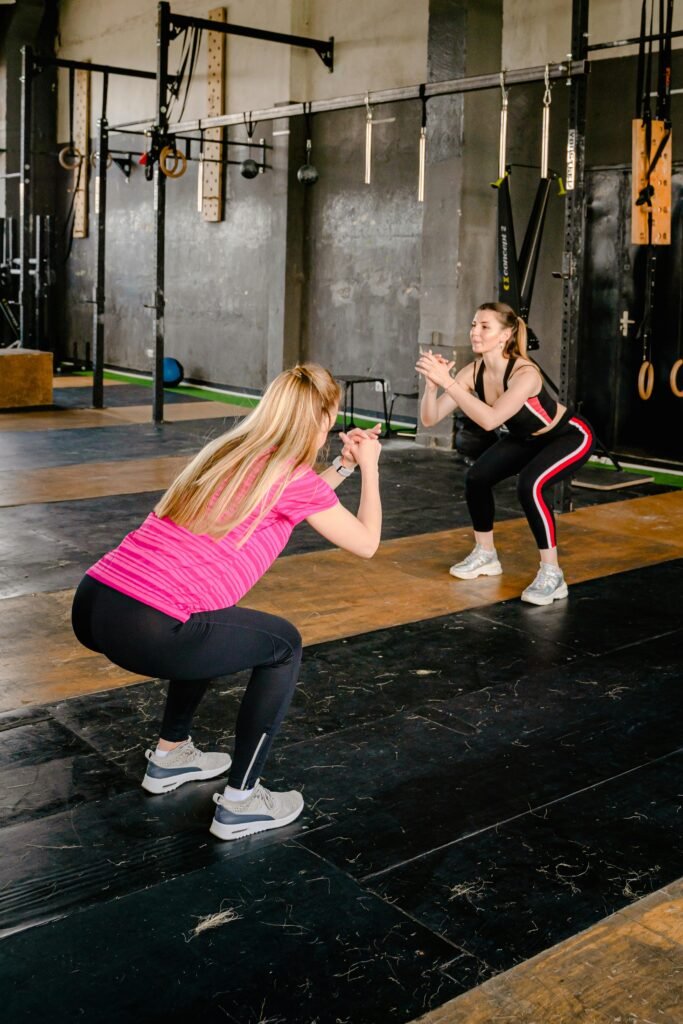
Garland or Squat Pose: Step-by-Step Instructions
Preparation:
- Find a Comfortable Space: Ensure you have enough room to move freely. Use a yoga mat for comfort and stability.
- Warm-Up: Perform a few gentle stretches to warm up your muscles, focusing on the hips, lower back, and ankles.
Starting Position:
- Stand Tall: Begin by standing at the top of your mat with your feet hip-width apart and your arms relaxed by your sides.
- Adjust Your Feet: Turn your toes slightly outward, ensuring your feet are comfortably grounded.
Begin to Squat:
- Inhale Deeply: As you inhale, engage your core and lengthen your spine.
- Exhale and Squat: On your exhale, bend your knees and lower your hips into a deep squat. Aim to bring your hips as close to your heels as possible.
Foot and Knee Position:
- Heels on the Ground: Try to keep your heels flat on the ground. If they lift, you can use a folded blanket or yoga block under your heels for support.
- Knees Wide: Open your knees wider than your torso, ensuring they align with your toes to avoid strain.
Engage the Upper Body:
- Hands in Prayer Position: Bring your palms together in a prayer position (Anjali Mudra) at your heart center.
- Elbows and Knees: Press your elbows against the inner sides of your knees. This action helps deepen the stretch and opens the hips further.
Maintain Alignment:
- Straight Spine: Lengthen your spine and keep your chest open, avoiding any rounding of the back.
- Shoulders Relaxed: Keep your shoulders relaxed and away from your ears.
Focus on Your Breath:
- Deep Breathing: Take slow, deep breaths, inhaling through your nose and exhaling through your mouth.
- Mindful Breathing: Focus on your breath to maintain balance and deepen the stretch.
Hold the Pose:
- Duration: Hold Garland Pose for 30 seconds to one minute, or longer if comfortable.
- Deepen the Stretch: With each exhale, try to sink deeper into the squat, maintaining alignment and comfort.
Release the Pose:
- Inhale to Prepare: Take a deep inhale to prepare to come out of the pose.
- Exhale and Rise: On your exhale, slowly straighten your legs and come back to a standing position. Take your time to avoid dizziness.
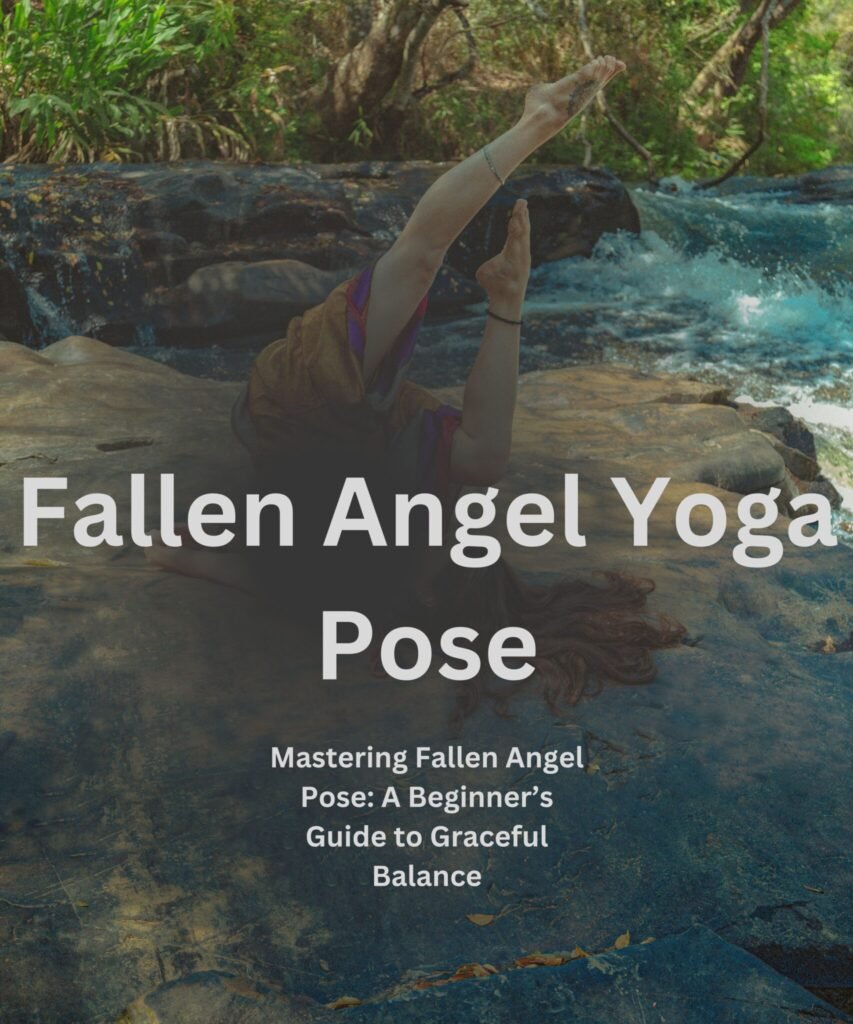
You might be interested in “FALLEN ANGEL YOGA POSE: A BEGINNER’S GUIDE AND TIPS.” click to READ
Modifications and Tips
Use Props for Support:
- Yoga Blocks: Place a yoga block under your hips if you cannot lower fully into the squat.
- Wall Support: Perform the pose near a wall to support your back if you find it difficult to balance.
Ease into the Pose:
- Gradual Practice: If you’re new to Garland Pose, start with shorter holds and gradually increase the duration as your flexibility improves.
- Partial Squat: Begin with a partial squat if a full squat is too challenging, and gradually work your way deeper.
Adjust Foot Position:
- Foot Width: Experiment with the width of your feet to find the most comfortable position for your hips and knees.
- Toe Position: Slightly turning your toes more or less outward can make the pose more accessible.
Listen to Your Body:
- Avoid Strain: Do not push yourself into discomfort. The pose should feel like a gentle stretch, not a strain.
- Mind Your Knees: Ensure that your knees track over your toes and do not collapse inward to avoid injury.
By following these detailed steps and modifications, you can safely and effectively perform Garland Pose Yoga, reaping its numerous physical and mental benefits. Practice regularly and mindfully to improve your flexibility, strength, and overall well-being.
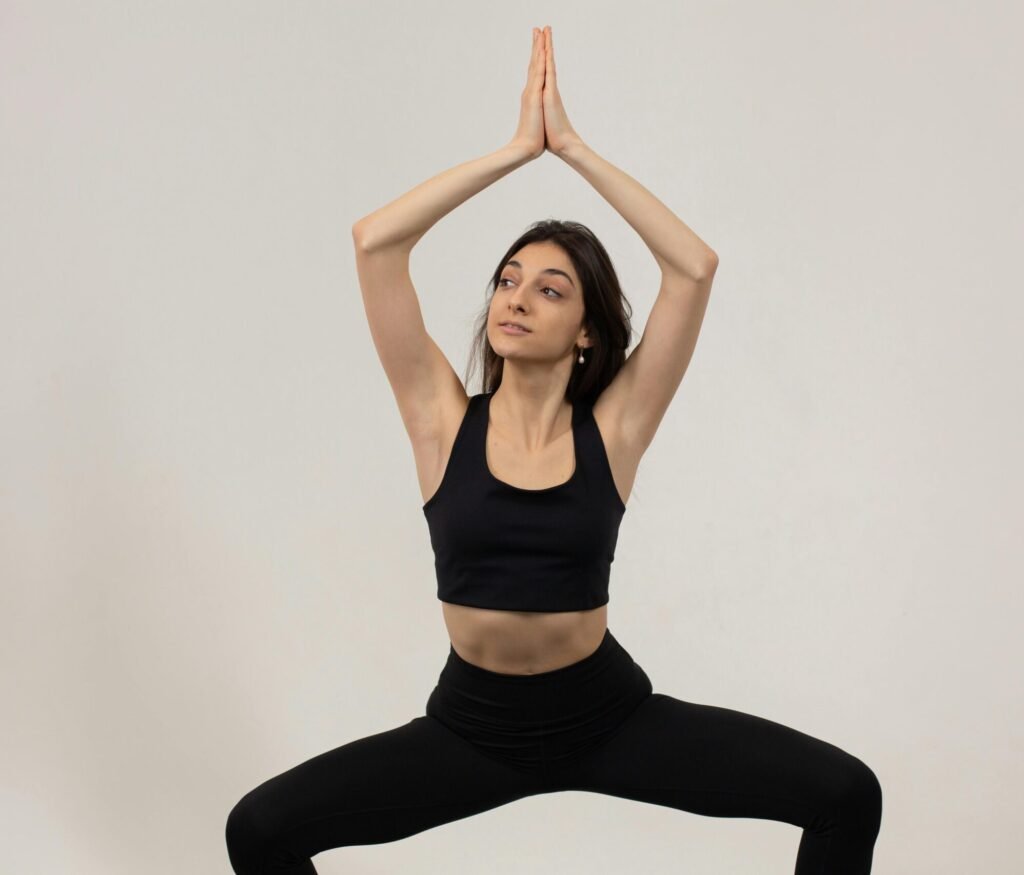
Variations of Garland Pose Yoga
Traditional Garland Pose (Malasana)
- Description: The basic squat position with feet hip-width apart, hands in prayer position at the heart, and elbows pressing against the inner knees to deepen the stretch.
- Benefits: Opens the hips, stretches the lower back and ankles, and improves balance and concentration.
2. Supported Garland Pose
- Using Props:
- Yoga Blocks: Place a block under your sitting bones to provide support if you cannot lower fully into the squat.
- Wall Support: Perform the pose near a wall to support your back and help with balance.
- Benefits: Makes the pose accessible to beginners or those with limited flexibility, allowing gradual improvement.
3. Bound Garland Pose
- Description: From the traditional Garland Pose, reach your right arm around your right knee and your left arm behind your back, clasping your hands or using a strap if necessary.
- Benefits: Deepens the shoulder stretch, enhances flexibility in the chest and shoulders, and adds a binding element to challenge balance and coordination.
4. Twisted Garland Pose (Parivrtta Malasana)
- Description:
- From the traditional Garland Pose, bring your left hand to the floor in front of you.
- Inhale and reach your right arm up towards the sky, twisting your torso to the right.
- Hold and breathe, then repeat on the other side.
- Benefits: Adds a spinal twist to the pose, promoting detoxification and spinal mobility while stretching the chest and shoulders.
5. Elevated Garland Pose
- Description:
- Stand on an elevated surface such as a sturdy block or step.
- Squat down into Garland Pose, allowing your heels to drop below the level of the surface if they do not reach the ground.
- Benefits: Helps those with tight calves or Achilles tendons achieve a deeper squat by providing more elevation for the heels.
6. Garland Pose with Arm Lift
- Description:
- Begin in the traditional Garland Pose.
- Inhale and extend both arms overhead, palms facing each other.
- Hold and breathe, maintaining balance and alignment.
- Benefits: Engages the core and upper body, improving overall strength and stability while maintaining the benefits of the hip and lower body stretch.
7. Wide-Legged Garland Pose
- Description:
- Start with your feet wider than hip-width apart, toes turned out at a comfortable angle.
- Squat down into Garland Pose with your feet wider than usual.
- Hands can be in prayer position or placed on the ground for support.
- Benefits: Provides a deeper stretch in the inner thighs and groin, enhances hip flexibility, and can be more accessible for those with tight hips.
8. Garland Pose with Heel Lift
- Description:
- Begin in the traditional Garland Pose.
- Inhale and lift both heels off the ground, balancing on the balls of your feet.
- Hold and breathe, engaging the core for stability.
- Benefits: Strengthens the calves and ankles, improves balance, and engages the core muscles more intensely.
9. Garland Pose with Forward Fold
- Description:
- Start in the traditional Garland Pose.
- Exhale and fold forward, bringing your hands to the ground in front of you.
- Relax your head and neck, allowing gravity to deepen the stretch.
- Benefits: Adds a gentle stretch to the lower back and hamstrings, promotes relaxation and stress relief.
10. Partner Garland Pose
- Description:
- Sit back-to-back with a partner, both starting in a squat position.
- Press your backs together for support and bring your hands into prayer position.
- Benefits: Provides mutual support, improves posture and alignment, and fosters a sense of connection and teamwork.
These changes can help you get the most out of Garland Pose Yoga by letting you experience all of its benefits. Each variation works out different muscle groups and adds its own challenges, making the yoga practice more complete and flexible.
conclusion
Malasana, or Garland Pose Yoga, is a very helpful and flexible yoga pose that makes your physical and mental health much better. This pose helps with a lot of things, from making the hips more flexible and easing back pain to improving gut health and lowering stress. The clear, step-by-step instructions make sure that people of all skill levels can do Garland Pose safely and correctly, enjoying all of its benefits.
By using the different modifications and variations of Garland Pose, you can make your own exercise that fits your flexibility, strength, and experience level. There is more than one way to do Garland Pose, so you can find one that works for you, whether you are a beginner who needs props to help you or an experienced practitioner who wants to try deeper stretches and bends.
Garland Pose Yoga is good for your health because it makes you more flexible, strong, and mobile. It’s also good for your mind because it helps you stay balanced and clear. You can live a more balanced, healthy, and satisfying life by making time for this important yoga pose.
Garland Pose can change your body and mind. Start doing it today as part of your yoga exercise. If you have specific health issues, talk to a yoga teacher or physiotherapist. Also, make sure you stick to a regular practice to help you get healthier and more vital overall.

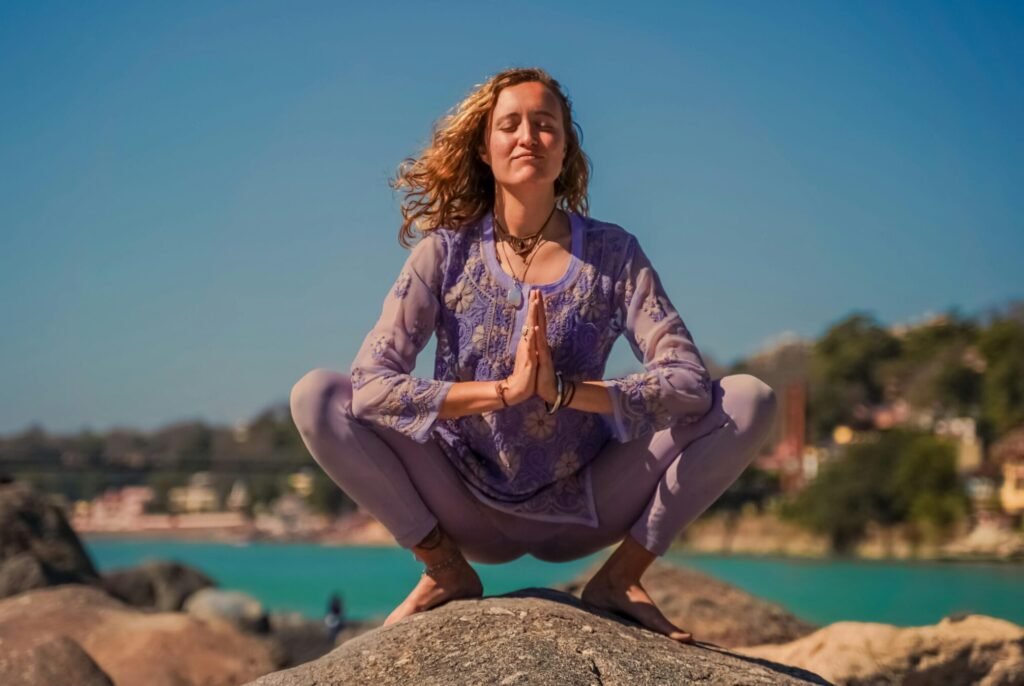







[…] For more yoga inspiration, explore our guide to mastering the Garland Pose […]